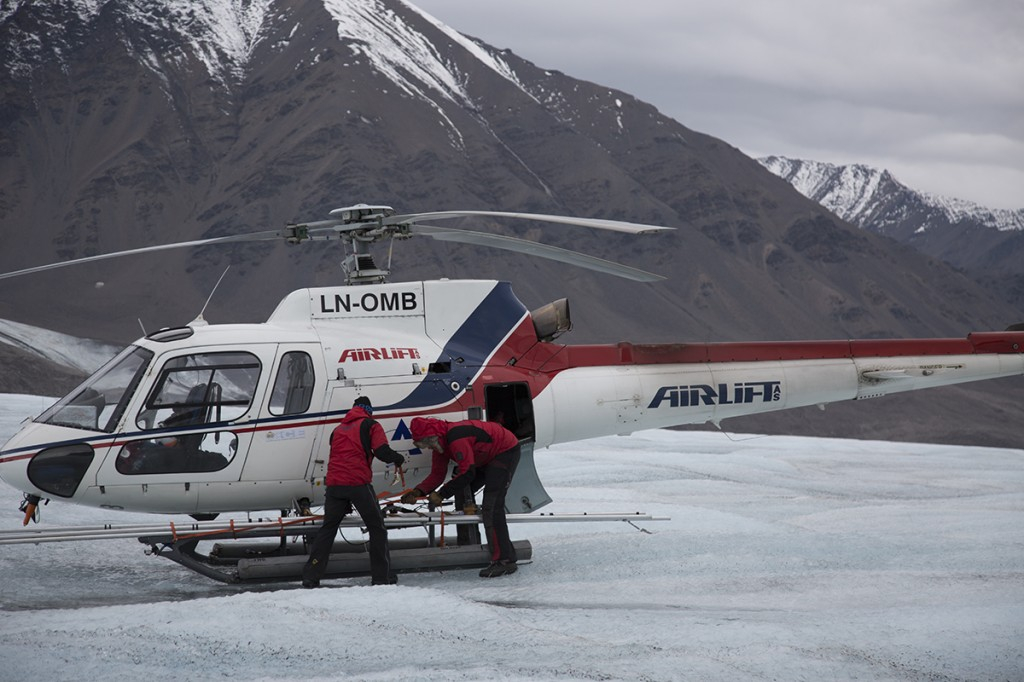I have learned a great deal from Jack Kohler about his research and the unique qualities of the Kronebreen Glacier here in Svalbard. Apparently that’s why so many glaciologists are attracted to do research here. Doug Benn, a professor at Svalbard UNIS was here with a team from Wales as well as Svalbard, up on the glacier for 3 days drilling a 295-meter deep (about 1,000) hole in which they dropped a sensor, which will record water pressure. They are coordinating with Jack Kohler who is primarily studying ice melt. Jack began his measurement work in 2000 but is carrying on a process first started in 1986. The smaller glacier he works on has been recorded since the 60’s. In the spring instruments are set up and in the fall he comes back to document the changes.
There were three different devices we visited over our two days of flying.
1) The weather stations record wind velocity, gusts, direction and temperatures. They either store the data locally or send it back by satellite and unlike the GPS stations, they don’t use a lot of power. We visited a number of them to gather data or to dismantle.
The crew helped and strapped the poles to the sides of the helicopter.
2) Some of the GPS stations have fancy electronic controls running them that are all custom built. The simpler ones can last a couple of years on Lithium batteries. Others are run by solar panels, which are of no use during months of dark winter, and then the windmills take over. One was removed because of the growing crevasses that had opened all around it. I couldn’t believe how we landed there crevasses in front, back, and to the sides of our helicopter.
3) The Measuring Poles, which serve as reference marks, were positioned upright on the glaciers. Running in a line from bottom to top. We spent a great deal of time throughout the day flying around locating them - sometimes with difficulty since the wind or a crevasse displaced them drastically. Sometimes we landed for Jack to measure their height (with an actual yellow tape). He told me that in the spring they were buried flush with the surface of snow and now some were 8 feet high.






